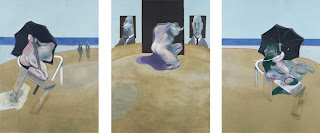ARCHITECTURE OF FEAR

To celebrate a short round-the-world trip early next year (
The first is the inexorable movement of the world’s population from country to city. In 1950, there were 86 cities in the world; there are now more than 400. The urban workforce has more than doubled in my lifetime. Given the extraordinary numbers of people in every part of the world required to shift these percentages, this is one of the most extraordinary and exponential developments in human history.
The second, which
Little of the world has escaped this polarisation of wealth. From the late 1970s onwards, the IMF imposed upon those nations of the Third World whose economies had been shattered by rocketing oil prices, falling commodity prices and rising debt, programmes of “structural adjustment” (SAPs): mass privatisation, devaluation, removal of subsidies, charging for health and education, and the forced withdrawal of the State.
The United Nations has described SAPs as “the main cause of increases in poverty and inequality during the 1980s and 1990s.” In
These two facts – de-industrialised urbanisation and skyscraping inequality – combine to produce two very different, and utterly segregated, types of community: the slum and the gated community. The well-heeled, urbane elite no longer feels attached to the city – it sees it as a place of depravity, crime and danger – and so it has left the urban poor to fend for itself, retiring to its country clubs and gated communities with its Middle American dreams.
These “off worlds” – to use the terminology of Blade Runner – are often imagineered as replica
Gated communities in Greater Buenos Aires are nothing new. The first, the Tortugas Country Club in Pilar, was built in 1932 and is still a successful polo club. But these early examples were only for the very wealthy; the great middle-class search for a rural nirvana began in the 1970s, when the fear of revolution and dictatorship was in the air, and reached its peak in the 1990s, as the neo-liberal policies pursued by Carlos Menem brought foreign investment to

While the globalised free-market accelerated inequalities in
The middle classes were helped in their rapid transit to the suburbs by a massive motorway expansion, begun during the junta and continued by the Alfonsin government, which connected
At the turn of the century, it is estimated that up to 100,000 people lived in gated communities around
[I]n the Mayling country club, for instance, those who were caught passing over the speed limits of 30 km/h, or who had not fenced their swimming pool according to a decision of the neighbourhood council, were denounced by their names on a board hung in the club-house.
- Guy Thuillier, "Gated Communities in the Metropolitan Area of Buenos Aires"

Thirdly, gated communities are the flipside of the slum communities which flourish on the outskirts of the capital: self-made, unplanned clusters housing newly-arrived immigrants from the poorest provinces who have come to the capital in search of work building enclaves for their upper-class neighbours. Even after the 2001 crash burst the gated property bubble, an incongruous coexistence remains between the wealthy and the poor who each populate the peripheries. The poor surround the rich, who provide them with work in the construction industry, or as servants. Those who can’t access work hold cars up, or vandalise houses and marinas. By shining a light on
*
What is the meaning of slums and gated communities? We know why they started, but how will they end? How will the vast concentration of capital into the hands of the elite few affect the way we live? How will the much vaster concentration of desperately poor, animalised people, for whom there is little work or community, for whom every degrading act aspires merely to survival – how will they change the world?
One sixth of humanity, or one third of the world’s labour force, is currently unemployed or underemployed. This may still represent a proletariat of sorts, but it is far removed from the conscious class of people whom Marx predicted would unravel the knots of capitalism and reassemble them into socialism. The slum population of the world is growing by 25 million per year, according to the UN: 25 million extra people tripping into what an Iraqi quoted in a New York Times article in 2005 called a “semi-death.”

MOGADISHU, 1993
Mike Davis poses these very questions in the epilogue of Planet of Slums:
But if informal urbanism becomes a dead-end street, won’t the poor revolt? Aren’t the great slums – as Disraeli worried in 1871 or Kennedy fretted in 1961 – just volcanoes waiting to erupt? Or does ruthless Darwinian competition – as increasing numbers of poor people compete for the same informal scraps – generate, instead, self-annihilating communal violence as yet the highest form of “urban involution”? To what extent does an informal proletariat possess that most potent of Marxist talismans: “historical agency”?
The conclusion

BAGHDAD, 2007
This is not some science-fictitious, dystopian prophecy. We see it happening now in the streets of
This delusionary dialectic of securitised versus demonic urban places, in turn, dictates a sinister and unceasing duet: Night after night, hornetlike helicopter gunships stalk enigmatic enemies in the narrow streets of the slum districts, pouring hellfire into shanties or fleeing cars. Every morning the slums reply with suicide bombers and eloquent explosions. If the empire can deploy Orwellian technologies of repression, its outcasts have the gods of chaos on their side.


.jpg)











